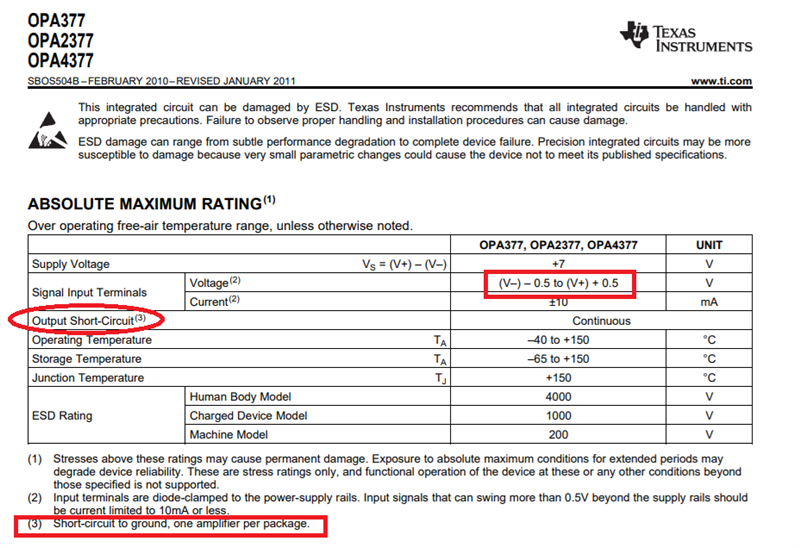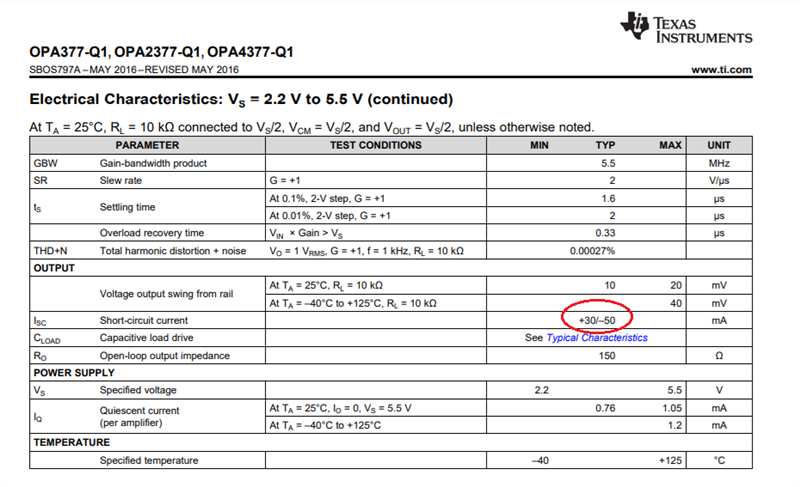Other Parts Discussed in Thread: OPA2377
Tool/software:
Hi,
I'm planning to use OPA2377QDGKRQ1 in mass production. After assembly at end-of-line testing, we need to apply voltage to the output terminal (pin7 and pin1) of this IC.
I couldn't find any information about sink current capacity and I needed to confirm application from TI side.
Q1) The VCC will be 3.3V and I'm planning to apply ~3V to output pin from (pin7 and pin1). Is it safe to do this? Does it damage my IC?
Q2) Does this application damage any component inside which leads problem in long-term usage? I meant some problems appear later on.
Q3) Does this application reduce life-time of component?
Thanks in advance.





